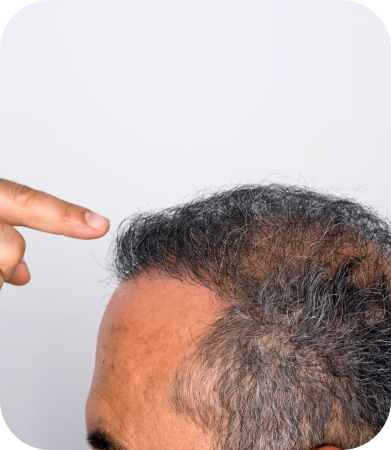Follicular Unit Extraction (FUE)
Follicular unit extraction (FUE) is a hair transplant procedure that is considered one of the latest advances in hair restoration. Because of its complex and comprehensive nature, this type of hair restoration treatment requires the skills and expertise of a doctor and his team of hair transplant experts. Various tools and instruments can assist with the FUE hair transplant procedure. Since FUE isn’t a simple procedure, it’s executed by the best hair transplant doctors worldwide. At our Long Island Hair Transplant Center, we use these tools to assist us in performing FUE hair transplant procedures.
Otherwise known as the FOX procedure, FUSE (follicular unit separation extraction) method, Wood’s technique, and the FU isolation method, FUE is one of two primary methods of obtaining hair follicles of naturally occurring groups of one to four hairs used for hair transplants. It is a method of harvesting hair from the donor area without a linear incision or a scalpel.
Considering there is no linear incision, it significantly decreases pain as the balding and thinning areas of the scalp are treated. Are you thinking about performing your hair implant at Long Island Hair Transplant Center? You’ll benefit from the advantages of having no linear scar on the back of your head, a quicker patient recovery time, and significantly lower postoperative discomfort than the follicular unit transplantation (FUT) procedure.
The small holes that are left usually take a few days to heal. Extraction of grafts in FUE may cause small, round, and typically white scars in the patient’s donor area where grafts have been removed. Various punches are used for this procedure, each having its advantages and disadvantages, with new ones developed continually.
With FUE, the follicles get extracted from a much larger area of the donor zone as opposed to FUT. This extraction is about eight times greater than that of the traditional strip method and it requires patients to have hairs trimmed in a much larger donor area. Follicles harvested from the borderline region of the donor area may not be “permanent.” After some time, the transplanted hair may be lost. Due to scarring of the donor area from FUE, succeeding sessions may be more difficult and grafts more fragile and subject to trauma during placing. This situation occurs because they often lack the protective dermis and fat of microscopically dissected grafts.
Typically, using natural follicular units for hair restoration can be complicated. A hair restoration team of skilled and experienced experts is required to achieve significant results. Dr. Barnard and Dr. Golio, together with Clinician Daniels, are hair restoration experts at Long Island Hair Transplant Center focusing on follicular unit transplants. These hair restoration professionals offer Cole, Ellis, and WAW FUE Systems as well as other FUE restoration options.


